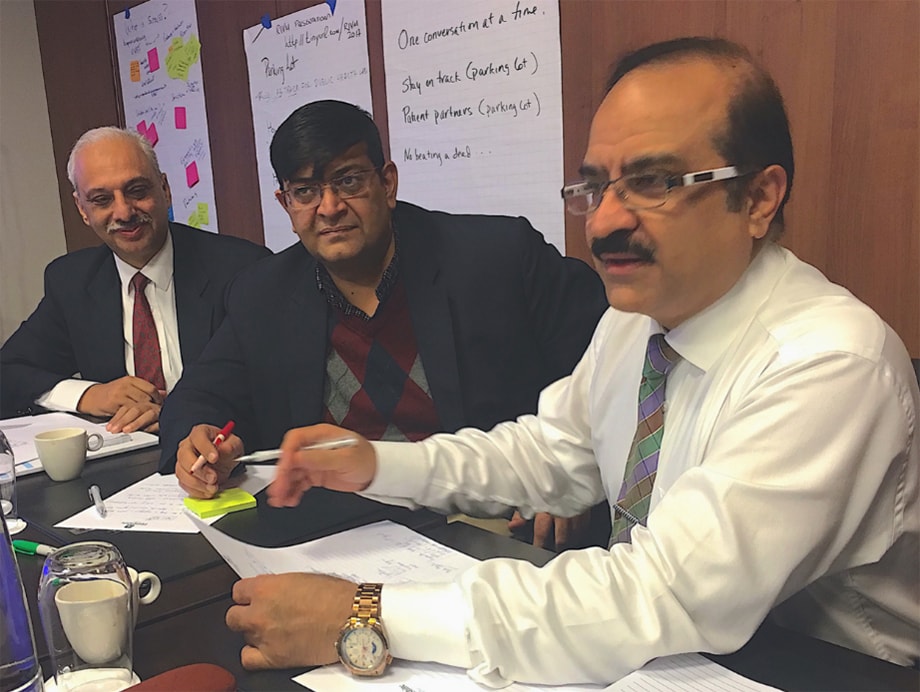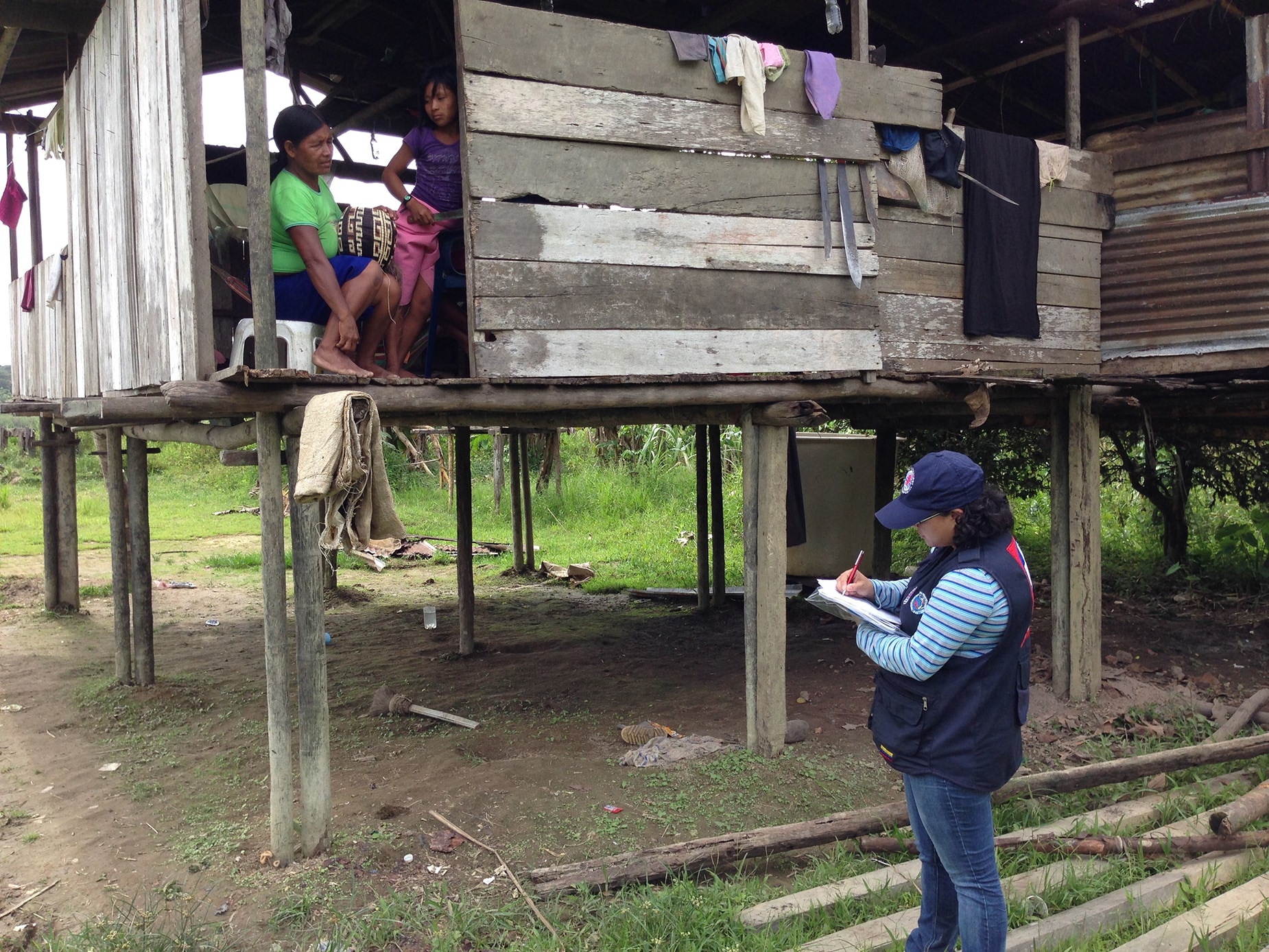Networking Between NPHIs Strengthens Public Health Systems at National, Regional, and Global Levels
June 11, 2021
CDC’s National Public Health Institute (NPHI) program works in partnership with countries around the world to help them organize and consolidate their public health expertise and systems within an NPHI.
Diseases know no borders so public health threats must be handled at both the national and global levels. CDC works closely with partners to strengthen regional public health functions through peer-to-peer mentorship and centers of excellence. Fostering these connections increases the value of CDC’s work by promoting NPHI mentorship and creating lasting networks.
The Value of Peer-to-Peer Connections: Pakistan and the Netherlands

In 2017, Pakistan delegation members share their vision for the new Pakistan NPHI. Pictured, L to R: Brigadier Dr. Aamer Ikram, Executive Director at Pakistan NIH; Dr. Muhammad Salman, Head of Virology Department at Pakistan NIH; and Dr. Faheem Tahir, Chief-Public Health Laboratory Division at Pakistan NIH. Photo: Sue Binder/IANPHI
In 2016, Pakistan’s National Institute of Healthexternal icon (NIH) took on the role as the country’s national public health institute. Through support from CDC’s NPHI program and the International Association of National Public Health Institutesexternal icon (IANPHI), NIH wished to learn from more experienced NPHIs.
A delegation from Pakistan visited the Netherlands’ National Institute for Public Health and the Environmentexternal icon (RIVM) in 2017. The match was a good fit for many reasons. Both NPHIs focus on infectious diseases, and NIH was seeking advice about developing a well-established legal framework like RIVM’s. Finally, since both have decentralized public health systems, NIH was interested in learning about RIVM’s experiences working with sub-national governmental organizations.
Although the visit focused on Pakistan’s NIH, RIVM found opportunities for learning as well. Discussions focused on leadership challenges, workforce development, environmental monitoring, community involvement and preparedness, scientific independence, the role of politics in public health, and finding balance among competing priorities. Ultimately, the talks provided valuable insights for both parties and helped inform NIH’s strategic thinking for the future. Pakistan NIH used these discussions to sharpen their vision and inform structure and function of their public health agency.
NPHI Centers of Excellence: Building on the Expertise of NPHIs

Field investigators screen indigenous communities in rural Colombia for Zika virus and other health concerns. Photo: Diana Marcela Walteros Acero, Colombia FETP and TEPHINET
Once a public health threat is identified in one country, it can quickly spread to neighboring ones. Regional networks play a crucial role — they can rapidly intervene to stop diseases from spreading within a region. Such networks are critical to respond to public health emergencies in border regions. Regional networks also play an important role in supporting the growth and development of neighboring NPHIs; strengthening public health capacity; fostering coordinated detection and response efforts; and meeting the requirements of the International Health Regulations (2005).
In 2021, CDC began supporting NPHI centers of excellence (COEs) in Colombia, Mozambique, Nigeria, Ukraine, and Zambia. These five countries have long-standing relationships with CDC and their NPHIs have expertise that can benefit their neighbors by providing technical assistance in the region. Regions can be geographic areas, linguistic communities, or countries with a cultural affinity. CDC is working with the COEs to develop and strengthen connections to act as technical partners supporting NPHI strengthening and public health activities. CDC’s goal is for the COEs to become resources for peer countries. As the program ramps up, CDC plans to identify additional COE NPHIs in other regions.
Colombia’s Instituto Nacional de Saludexternal icon (INS) is a leader in emergency preparedness and response, laboratory capacity, workforce development, and improved use of data for public health action. Colombia has provided support to countries in Central and South America, including during the regional Zika epidemic and the Venezuela migrant crisis.
Mozambique’s Instituto Nacional de Saúdeexternal icon (INS) has supported NPHIs in Angola, Guinea Bissau, Sierra Leone, and Zambia. INS has provided expertise in areas including surveillance, laboratory, workforce development, outbreak investigation, public health research, and measurement and evaluation. Mozambique INS is a prime example of a strong, well-established NPHI supporting and advising newer neighboring NPHIs while continuing to strengthen its national programs to serve Mozambicans.
Zambia’s National Public Health Instituteexternal icon (ZNPHI) has guided developing NPHIs in Botswana, Malawi, Namibia, Zimbabwe, and the Democratic Republic of the Congo. ZNPHI has provided guidance on surveillance, laboratory, workforce development, emergency management, and public health research. ZNPHI also works closely with the Africa CDC Regional Collaborating Center located in Zambia to help coordinate and link the various activities of NPHIs in the region.
The Value of NPHI Connections
Examples like Colombia, Mozambique, and Zambia illustrate the value of NPHI peer-to-peer connection. Working together to learn, network, and share insights, NPHIs can build their public health capacities with guidance from more experienced peers. These connections will improve countries’ essential public health functions while providing resources to help in emergencies.
